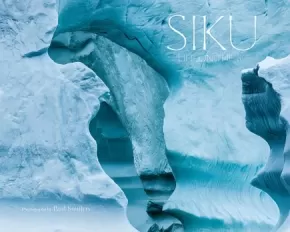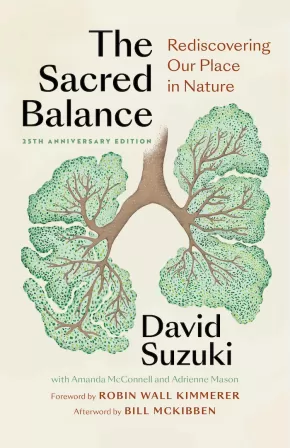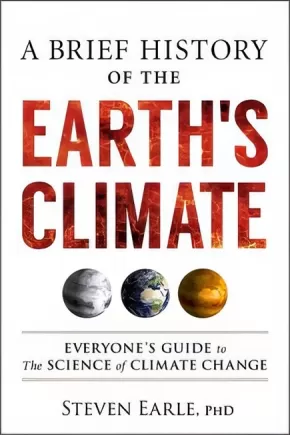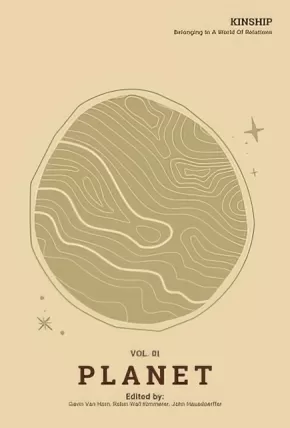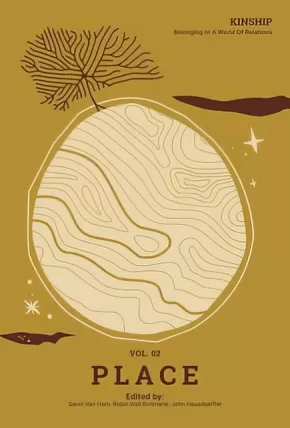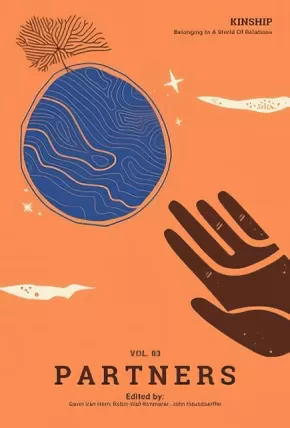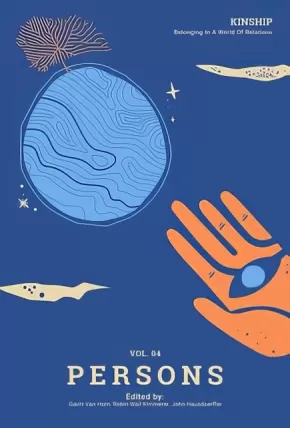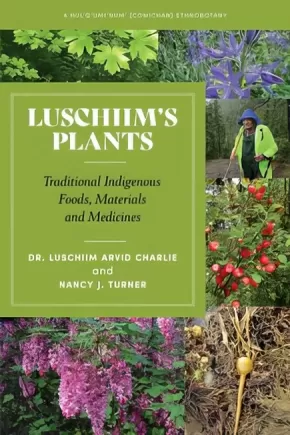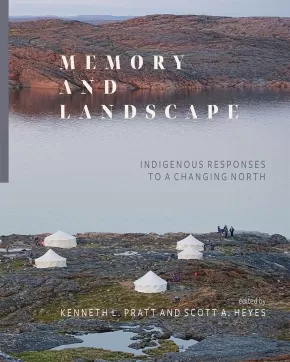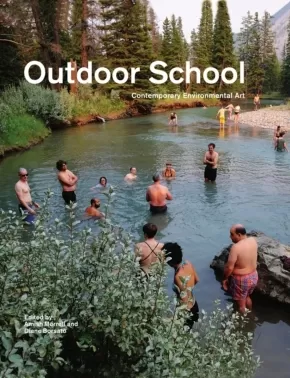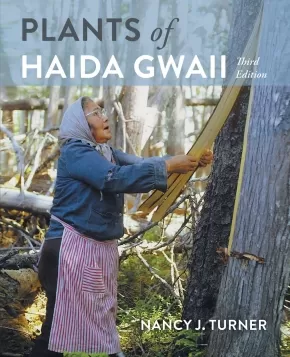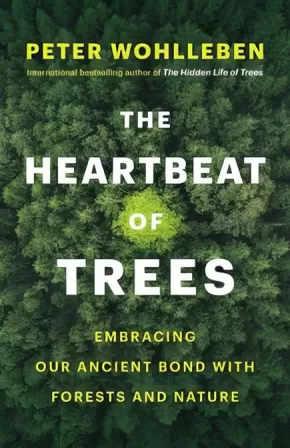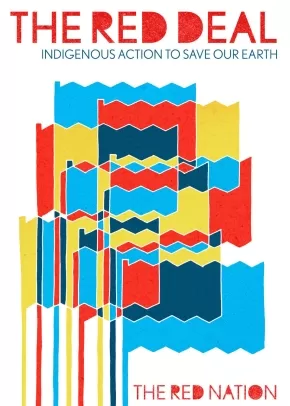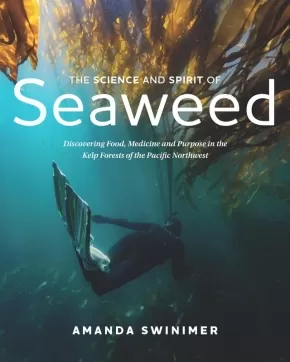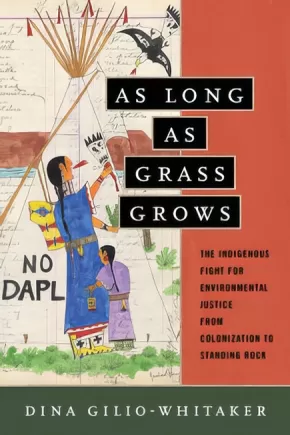Environmental Awareness
Synopsis:
Arctic ice is a daily consideration for people living above the Arctic circle. Ice is key to successful hunts, ease of travel, and the health of wildlife. This book features sweeping landscape photography of Arctic sea ice in all its forms, accompanied by anecdotes from community members across the North. From traditional stories of what lurks under the ice to harrowing tales of hunters on the ice and traditional knowledge about ice safety and conditions, this book presents the beauty, complexity, and unique challenges of living daily in an ever-evolving icy landscape.
Educator Information
Foreword by Sheila Watt-Cloutier
Additional Information
72 pages | 11.00" x 8.00" | Colour photographs | Hardcover
Synopsis:
“The Sacred Balance has a beautiful spirit.”—E.O. Wilson
With a new foreword from Robin Wall Kimmerer, New York Times-bestselling author of Braiding Sweetgrass—and an afterword from Bill McKibben—this special 25thanniversary edition of a beloved bestseller invites readers to see ourselves as part of nature, not separate.
The world is changing at a relentless pace. How can we slow down and act from a place of respect for all living things? The Sacred Balance shows us how.
In this extensively updated new edition, David Suzuki reflects on the increasingly radical changes in science and nature—from the climate crisis to peak oil and the rise in clean energy—and examines what they mean for humankind. He also reflects on what we have learned by listening to Indigenous leaders, whose knowledge of the natural world is profound, and whose peoples are on the frontlines of protecting land and water around the world.
Drawing on his own experiences and those of others who have put their beliefs into action, The Sacred Balance combines science, philosophy, spirituality, and Indigenous knowledge to offer concrete suggestions for creating an ecologically sustainable future by rediscovering and addressing humanity’s basic needs.
Additional Information
336 pages | 8.50" x 5.50" | Paperback
Synopsis:
What's natural, what's caused by humans, and why climate change is a disaster for all.
A Brief History of the Earth's Climate is an accessible myth-busting guide to the natural evolution of the Earth's climate over 4.6 billion years, and how and why human-caused global warming and climate change is different and much more dangerous.
Richly illustrated chapters cover the major historical climate change processes including evolution of the sun, plate motions and continental collisions, volcanic eruptions, changes to major ocean currents, Earth's orbital variations, sunspot variations, and short-term ocean current cycles. As well as recent human-induced climate change and an overview of the implications of the COVID pandemic for climate change. Content includes:
- Understanding natural geological processes that shaped the climate
- How human impacts are now rapidly changing the climate
- Tipping points and the unfolding climate crisis
- What we can do to limit the damage to the planet and ecosystems
- Countering climate myths peddled by climate change science deniers.
A Brief History of the Earth's Climate is essential reading for everyone who is looking to understand what drives climate change, counter skeptics and deniers, and take action on the climate emergency.
Reviews
"I love it. Earle understands the big climate picture and paints it with exceptional clarity."— James Hansen, director, Climate Science, Awareness and Solutions, Columbia University Earth Institute
"An informative, succinct, and fascinating read — Steven Earle offers a unique and detailed account of Earth's climate history. His innate story-telling ability, coupled with his remarkable talent for making complex scientific information accessible, makes this page-turner a must-read for anyone seeking to understand the Earth's climate system."— Andrew Weaver, professor, University of Victoria, lead author, Intergovernmental Panel on Climate Change, second, third, fourth, and fifth Assessment Reports, former chief editor, Journal of Climate
"An engaging tour through the complex natural processes at play in writing the Earth's long history of natural climate change to our present climate emergency. This primer will give campaigners, policymakers, and concerned citizens a more thorough understanding of climate science and renewed conviction to go all in on applying the brakes, leaving fossil fuels behind, and embracing a cleaner, healthier, and more equitable future."— Tom Green, Senior Climate Policy Advisor, David Suzuki Foundation
"People interested in climate change, which these days should be everyone, need a basic understanding of the science of why Earth's climate is the way it is, and why it sometimes changes. Earle's book makes that complicated story easy to grasp. It's a model for clear science writing, and it forcefully awakens readers to what's at stake and what needs to be done."— Richard Heinberg, Senior Fellow, Post Carbon Institute, author, Power
Additional Information
208 pages | 6.00" x 9.00" | 60 black and white illustrations | Paperback
Synopsis:
We live in an astounding world of relations. We share these ties that bind with our fellow humans—and we share these relations with nonhuman beings as well. From the bacterium swimming in your belly to the trees exhaling the breath you breathe, this community of life is our kin—and, for many cultures around the world, being human is based upon this extended sense of kinship.
Kinship: Belonging in a World of Relations is a lively series that explores our deep interconnections with the living world. The five Kinship volumes—Planet, Place, Partners, Persons, Practice—offer essays, interviews, poetry, and stories of solidarity, highlighting the interdependence that exists between humans and nonhuman beings. More than 70 contributors—including Robin Wall Kimmerer, Richard Powers, David Abram, J. Drew Lanham, and Sharon Blackie—invite readers into cosmologies, narratives, and everyday interactions that embrace a more-than-human world as worthy of our response and responsibility.
With every breath, every sip of water, every meal, we are reminded that our lives are inseparable from the life of the world—and the cosmos—in ways both material and spiritual. “Planet,” Volume 1 of the Kinship series, focuses on our Earthen home and the cosmos within which our “pale blue dot” of a planet nestles. National poet laureate Joy Harjo opens up the volume asking us to “Remember the sky you were born under.” The essayists and poets that follow—such as geologist Marcia Bjornerud who takes readers on a Deep Time journey, geophilosopher David Abram who imagines the Earth’s breathing through animal migrations, and theoretical physicist Marcelo Gleiser who contemplates the relations between mystery and science—offer perspectives from around the world and from various cultures about what it means to be an Earthling, and all that we share in common with our planetary kin. “Remember,” Harjo implores, “all is in motion, is growing, is you.”
Proceeds from sales of Kinship benefit the nonprofit, non-partisan Center for Humans and Nature, which partners with some of the brightest minds to explore human responsibilities to each other and the more-than-human world. The Center brings together philosophers, ecologists, artists, political scientists, anthropologists, poets and economists, among others, to think creatively about a resilient future for the whole community of life.
Contributors are both Indigenous and non-Indigenous.
Additional Information
180 pages | 5.27" x 7.75" | Paperback
Synopsis:
We live in an astounding world of relations. We share these ties that bind with our fellow humans—and we share these relations with nonhuman beings as well. From the bacterium swimming in your belly to the trees exhaling the breath you breathe, this community of life is our kin—and, for many cultures around the world, being human is based upon this extended sense of kinship.
Kinship: Belonging in a World of Relations is a lively series that explores our deep interconnections with the living world. The five Kinship volumes—Planet, Place, Partners, Persons, Practice—offer essays, interviews, poetry, and stories of solidarity, highlighting the interdependence that exists between humans and nonhuman beings. More than 70 contributors—including Robin Wall Kimmerer, Richard Powers, David Abram, J. Drew Lanham, and Sharon Blackie—invite readers into cosmologies, narratives, and everyday interactions that embrace a more-than-human world as worthy of our response and responsibility.
Given the place-based circumstances of human evolution and culture, global consciousness may be too broad a scale of care. “Place,” Volume 2 of the Kinship series, addresses the bioregional, multispecies communities and landscapes within which we dwell. The essayists and poets in this volume take us around the world to a variety of distinctive places—from ethnobiologist Gary Paul Nabhan’s beloved and beleaguered sacred U.S.-Mexico borderlands, to Pacific islander and poet Craig Santos Perez’s ancestral shores, to writer Lisa María Madera’s “vibrant flow of kinship” in the equatorial Andes expressed in Pacha Mama’s constitutional rights in Ecuador. As Chippewa scholar-activist Melissa Nelson observes about kinning with place in her conversation with John Hausdoerffer: “Whether a desert mesa, a forested mountain, a windswept plain, or a crowded city—those places also participate in this serious play with raven cries, northern winds, car traffic, or coyote howls.” This volume reveals the ways in which playing in, tending to, and caring for place wraps us into a world of kinship.
Proceeds from sales of Kinship benefit the nonprofit, non-partisan Center for Humans and Nature, which partners with some of the brightest minds to explore human responsibilities to each other and the more-than-human world. The Center brings together philosophers, ecologists, artists, political scientists, anthropologists, poets and economists, among others, to think creatively about a resilient future for the whole community of life.
Contributors are both Indigenous and non-Indigenous.
Additional Information
204 pages | 5.27" x 7.75" | Paperback
Synopsis:
We live in an astounding world of relations. We share these ties that bind with our fellow humans—and we share these relations with nonhuman beings as well. From the bacterium swimming in your belly to the trees exhaling the breath you breathe, this community of life is our kin—and, for many cultures around the world, being human is based upon this extended sense of kinship.
Kinship: Belonging in a World of Relations is a lively series that explores our deep interconnections with the living world. The five Kinship volumes—Planet, Place, Partners, Persons, Practice—offer essays, interviews, poetry, and stories of solidarity, highlighting the interdependence that exists between humans and nonhuman beings. More than 70 contributors—including Robin Wall Kimmerer, Richard Powers, David Abram, J. Drew Lanham, and Sharon Blackie—invite readers into cosmologies, narratives, and everyday interactions that embrace a more-than-human world as worthy of our response and responsibility.
How do cultural traditions, narratives, and mythologies shape the ways we relate, or not, to other beings as kin? “Partners,” Volume 3 of the Kinship series, looks to the intimate relationships of respect and reverence we share with nonhuman species. The essayists and poets in this volume explore the stunning diversity of our relations to nonhuman persons—from biologist Merlin Sheldrake’s reflections on microscopic fungal networks, to writer Julian Hoffman’s moving stories about elephant emotions and communication, to Indigenous seed activist Rowen White’s deep care for plant relatives and ancestors. Our relationships to other creatures are not merely important; they make us possible. As poet Brenda Cárdenas, inspired by her cultural connections to the monarch butterfly, notes in this volume: “We are— / one life passing through the prism / of all others, gathering color and song.”
Proceeds from sales of Kinship benefit the nonprofit, non-partisan Center for Humans and Nature, which partners with some of the brightest minds to explore human responsibilities to each other and the more-than-human world. The Center brings together philosophers, ecologists, artists, political scientists, anthropologists, poets and economists, among others, to think creatively about a resilient future for the whole community of life.
Contributors are both Indigenous and non-Indigenous.
Additional Information
170 pages | 5.27" x 7.75" | Paperback
Synopsis:
We live in an astounding world of relations. We share these ties that bind with our fellow humans—and we share these relations with nonhuman beings as well. From the bacterium swimming in your belly to the trees exhaling the breath you breathe, this community of life is our kin—and, for many cultures around the world, being human is based upon this extended sense of kinship.
Kinship: Belonging in a World of Relations is a lively series that explores our deep interconnections with the living world. The five Kinship volumes—Planet, Place, Partners, Persons, Practice—offer essays, interviews, poetry, and stories of solidarity, highlighting the interdependence that exists between humans and nonhuman beings. More than 70 contributors—including Robin Wall Kimmerer, Richard Powers, David Abram, J. Drew Lanham, and Sharon Blackie—invite readers into cosmologies, narratives, and everyday interactions that embrace a more-than-human world as worthy of our response and responsibility.
Kinship spans the cosmos, but it is perhaps most life-changing when experienced directly and personally. “Persons,” Volume 4 of the Kinship series, attends to the personal—our unique experiences with particular creatures and landscapes. This includes nonhuman kin that become our allies, familiars, and teachers as we navigate a “world as full of persons, human and otherwise, all more-or-less close kin, all deserving respect,” as religious studies scholar Graham Harvey puts it. The essayists and poets in the volume share a wide variety of kinship-based experiences—from Australian ecophilosopher Freya Mathews’s perspective on climate-related devastation on her country’s koalas, to English professor and forest therapy guide Kimberly Ruffin’s reclamation of her “inner animal,” to German biologist and philosopher Andreas Weber’s absorption with and by lichen. Our kinships are interpersonal, and being “pried open with curiosity,” as poet and hip-hop emcee Manon Voice notes in this volume, “Stir the first of many magicks.”
Proceeds from sales of Kinship benefit the nonprofit, non-partisan Center for Humans and Nature, which partners with some of the brightest minds to explore human responsibilities to each other and the more-than-human world. The Center brings together philosophers, ecologists, artists, political scientists, anthropologists, poets and economists, among others, to think creatively about a resilient future for the whole community of life.
One of the editors of this work is Indigenous. And, throughout the series, various Indigenous contributions (stories, poems, etc.) can be found.
Additional Information
194 pages | 5.27" x 7.75" | Paperback
Synopsis:
In this unprecedented collection of botanical information, over 140 plants are categorized within their broad botanical groupings: algae and seaweeds, lichens, fungi and mushrooms, mosses and liverworts, ferns and fern-allies, coniferous trees, deciduous trees, shrubs and vines, and herbaceous flowering plants. Each entry is illustrated with a colour photo and includes the plant’s common, scientific and Hul′q′umi′num′ names; a short description; where to find it; and cultural knowledge related to the plant. Additional notes encompass plant use, safety and conservation; the linguistic writing system used for Hul′q′umi′num′ plant names; as well as miscellaneous notes from interviews with Luschiim.
This volume is an important addition to the bookshelves of botanists, and will fascinate anyone with an interest in plants of the West Coast and their traditional uses by Coast Salish peoples.
This resource is in English with additional notes that encompass the linguistic writing system used for Hul′q′umi′num′ plant names.
288 pages | 6.00" x 9.00"
Synopsis:
“Our identity, our sense of belonging, our understanding of being human, is all connected to our relationship with the land. And our relationship with these lands span millennia. Our grandfathers and grandmothers that came before us walked these same ridges, valleys, and trails. They fished the same lakes, streams, and rivers. They cherished memories carried in the pungent smell of the fall tundra, in wafts of spruce, cottonwood, and willow smoke. They ventured throughout these lands until their final rest. Our ancestors are literally part of this land. We are part of this land.” –Evon Peter
The North is changing at an unprecedented rate as industrial development and the climate crisis disrupt not only the environment but also long-standing relationships to the land and traditional means of livelihood. Memory and Landscape: Indigenous Responses to a Changing North explores the ways in which Indigenous peoples in the Arctic have adapted to challenging circumstances, including past cultural and environmental changes. In this beautifully illustrated volume, contributors document how Indigenous communities in Alaska, northern Canada, Greenland, and Siberia are seeking ways to maintain and strengthen their cultural identity while also embracing forces of disruption.
Indigenous and non-Indigenous contributors bring together oral history and scholarly research from disciplines such as linguistics, archaeology, and ethnohistory. With an emphasis on Indigenous place names, this volume illuminates how the land—and the memories that are inextricably tied to it—continue to define Indigenous identity. The perspectives presented here also serve to underscore the value of Indigenous knowledge and its essential place in future studies of the Arctic.
Contributions by Vinnie Baron, Hugh Brody, Kenneth Buck, Anna Bunce, Donald Butler, Michael A. Chenlov, Aron L. Crowell, Peter C. Dawson, Martha Dowsley, Robert Drozda, Gary Holton, Colleen Hughes, Peter Jacobs, Emily Kearney-Williams, Igor Krupnik, Apayo Moore, Murielle Nagy, Mark Nuttall, Evon Peter, Louann Rank, William E. Simeone, Felix St-Aubin, and Will Stolz.
Additional Information
448 pages | 8.00" x 10.00" | 172 Colour Illustrations | Paperback
Authenticity Note: This work contains contributions from Indigenous and non-Indigenous contributors. It is up to readers to determine if this is an authentic work for their purposes.
Synopsis:
Outdoor School features recent works of contemporary environmental art and writing by more than twenty-five Canadian and Indigenous artists who propose radical new ways of thinking and being outdoors together.
For more than a decade, the Outdoor School project has provided a framework for interdisciplinary artists to come together and share projects that reimagine ways of relating with the landscape.
The experiential and community-based art projects described in Outdoor School present an alternative to scientific, commercial and colonial conceptions of land and nature in the face of climate change and mass extinction. These art practices include activities like mushroom foraging, water witching, trespassing, pumpkin-boat sailing, cloud identifying, ravine running, honey extracting, spell conjuring, rabbit hunting, coyote walking and more. The project calls attention to creative, counter-cultural works that are focused on education, community and place, and blur the boundaries between art and life, nature and culture.
Featuring interviews, essays and over 150 photographs, Outdoor School is an important contribution to discussions of contemporary art and ecology, foregrounding work that is marginal and ephemeral by nature.
Artists featured in Outdoor School include Alana Bartol, Diane Borsato, Bill Burns, Carolina Caycedo, Sameer Farooq, FASTWÜRMS, Ayumi Goto, Maggie Groat, Gabrielle Hill, Peter Morin, Public Studio, Helen Reed, Genevieve Robertson, Jamie Ross, Aislinn Thomas, Vibrant Matter, Jay White, Tania Willard, Terri-Lynn Williams-Davidson and D'Arcy Wilson.
Educator Information
Additional Information
192 pages | 8.00" x 10.00" | colour photographs
Authenticity Note: This work has received the Authentic Indigenous Text label because of the Indigenous contributions to this work. Non-Indigenous contributors are also featured, and the editors are not Indigenous. It is up to readers to determine if this resource is authentic for their purposes.
Synopsis:
For many thousands of years the lands and waters of Haida Gwaii have been home to the Haida. Plants of Haida Gwaii, written with the cooperation and collaboration of Haida knowledge holders and botanical experts, is a detailed and insightful record of the traditional uses of over 150 species of native plants. Moreover, it explains the systems of knowledge and understanding that enabled the Haida to use the resources of their islands sustainably from one generation to the next over millennia.
The Haida names of these plants indicate their importance, as do the many narratives featuring them. From the ts’uu—massive western red-cedars—of the forests which provide wood used for canoes, house posts, poles and boxes, and bark carefully harvested for weaving mats, baskets and hats, to the ngaal—tough, resilient fronds of giant kelp—used to harvest herring eggs, the botanical species used by the Haida are found from the ocean to the mountain tops, and are as important today as ever before. With over 250 photographs and illustrations, this book is both beautiful and informative.
Additional Information
272 pages | 7.50" x 9.25"
Authenticity Note: As there are contributions from Haida knowledge holders, this work has been labelled as containing authentic Indigenous text. It is up to readers to determine if this work is authentic for their purposes.
Synopsis:
A powerful return to the forest, where trees have heartbeats and roots are like brains that extend underground. Where the color green calms us, and the forest sharpens our senses.
In The Heartbeat of Trees, renowned forester Peter Wohlleben draws on new scientific discoveries to show how humans are deeply connected to the natural world.In an era of cell phone addiction, climate change, and urban life, many of us fear we’ve lost our connection to nature—but Peter Wohlleben is convinced that age-old ties linking humans to the forest remain alive and intact.
Drawing on science and cutting-edge research, The Heartbeat of Trees reveals the profound interactions humans can have with nature, exploring:
- the language of the forest
- the consciousness of plants
- and the eroding boundary between flora and fauna.
A perfect book to take with you into the woods, The Heartbeat of Trees shares how to see, feel, smell, hear, and even taste the forest.
Peter Wohlleben, renowned for his ability to write about trees in an engaging and moving way, reveals a wondrous cosmos where humans are a part of nature, and where conservation and environmental activism is not just about saving trees—it’s about saving ourselves, too.
Reviews
“As human beings, we’re desperate to feel that we’re not alone in the universe. And yet we are surrounded by an ongoing conversation that we can sense if, as Peter Wohlleben so movingly prescribes, we listen to the heartbeat of all life.” —Richard Louv, author of Our Wild Calling and Last Child in the Woods
“Astonishment after astonishment—that is the great gift of The Heartbeat of Trees. It is both a celebration of the wonders of trees, and a howl of outrage at how recklessly we profane them.” —Kathleen Dean Moore, author of Earth’s Wild Music
“As Peter Wohlleben reminds us in The Heartbeat of Trees, trees are the vocabulary of nature as forests are the brainbank of a living planet. This was the codex of the ancient world, and it must be the fine focus of our future.” —Dr. Diana Beresford-Kroeger, author of To Speak for the Trees and The Global Forest
Additional Information
264 pages | 5.50" x 8.50" | Hardcover
Synopsis:
When the Red Nation released their call for a Red Deal, it generated coverage in places from Teen Vogue to Jacobin to the New Republic, was endorsed by the DSA, and has galvanized organizing and action. Now, in response to popular demand, the Red Nation expands their original statement filling in the histories and ideas that formed it and forwarding an even more powerful case for the actions it demands.
One-part visionary platform, one-part practical toolkit, the Red Deal is a platform that encompasses everyone, including non-Indigenous comrades and relatives who live on Indigenous land. We—Indigenous, Black and people of color, women and trans folks, migrants, and working people—did not create this disaster, but we have inherited it. We have barely a decade to turn back the tide of climate disaster. It is time to reclaim the life and destiny that has been stolen from us and riseup together to confront this challenge and build a world where all life can thrive. Only mass movements can do what the moment demands. Politicians may or may not follow--it is up to them--but we will design, build, and lead this movement with or without them.
The Red Deal is a call for action beyond the scope of the US colonial state. It’s a program for Indigenous liberation, life, and land—an affirmation that colonialism and capitalism must be overturned for this planet to be habitable for human and other-than-human relatives to live dignified lives. The Red Deal is not a response to the Green New Deal, or a “bargain” with the elite and powerful. It’s a deal with the humble people of the earth; a pact that we shall strive for peace and justice and a declaration that movements for justice must come from below and to the left.
Reviews
“The Red Nation has given us The Red Deal, an Indigenous Peoples’ world view and practice that leads to profound changes in existing human relations. Five hundred years of European colonialism, which produced capitalist economic and social relations, has nearly destroyed life itself. Technology can be marshaled to reverse this death march, but it will require a vision for the future and a path to follow to arrive there, and that is what The Red Deal provides.”—Roxanne Dunbar-Ortiz, author of An Indigenous Peoples’ History of the United States
"The Red Deal is an incendiary and necessary compilation. With momentum for a Green New Deal mounting, the humble and powerful organizers of The Red Nation remind us that a Green New Deal must also be Red—socialist, committed to class struggle, internationalist in orientation, and opposed to the settler-colonial theft of Indigenous lands and resources. Redistribution also requires reparations and land back. The Red Deal is a profound call to action for us all."—Harsha Walia, author of Undoing Border Imperialism and Border and Rule: Global Migration, Capitalism, and the Rise of Racist Nationalism
“We really need The Red Deal because it forces open a critical conversation on how Land Back can be a platform for mass mobilization and collective struggle. The Red Deal poignantly argues that if we do not foreground decolonization and Indigenous liberation in climate justice strategies such as the Green New Deal, we will reproduce the violence of the original New Deal that dammed life-giving rivers and further dispossessed Indigenous peoples of their lands. Strategically, The Red Deal shows how, if we understand green infrastructure and economic restructuring as anticolonial struggle, as well as an anticapitalist, we can move from reforms that deny Indigenous jurisdiction towards just coalitions for repossession that radically rethink environmental policy and land protection without sacrificing Indigenous life and relations.”—Shiri Pasternak, author of Grounded Authority: The Algonquins of Barriere Lake Against the State
“The Red Deal asserts that the fight for climate justice must center Native people when it comes to the issues that disproportionately impact Native communities, but it also communicates what the Green New Deal does not — namely, that public lands are stolen lands and climate change is significantly caused by just a few industries, which the government has at worst neglected to hold accountable and at best assisted in their efforts to mine the earth for resources in a move that put profits over people.” —Teen Vogue
“For the Red Nation, living and being interdependent with Mother Nature is explicitly anticapitalist. An ethos merely hinted at in the Green New Deal, The Red Deal understands that capitalism fundamentally protects wealth, not life”—The Politic
“The Red Nation also names Black abolitionists as an inspiration for the Red Deal, citing the links between mass incarceration and detention and climate change. They further note that police departments, prisons, and the U.S. military receive billions of taxpayer dollars annually while doing irreparable harm to Native Americans, Black people, and the Earth.” —Essence
Educator Information
Excerpt from the book:
The Red Deal begins with the oldest yet often forgotten struggle on this continent: ending the occupation. While usually erased from the history of this nation, settler colonial occupation has fundamentally shaped the development of the United States and indeed the world that it dominates economically and politically. Ending the occupation links those of us in the seat of empire with those who face its weapons, soldiers, and policies around the world. Together we share the common enemy of US imperialism, and Indigenous people here have fought against it since the first settlers began to occupy our lands by force. It is important to remember that the very first act of US imperialism was the military and settler incursions on Indigenous land as the fledgling colonies expanded westward. This is why we begin with ending the occupation.
The struggle against occupation on this continent has remained strong throughout history and continues to this day. We’ve seen this in the global uprisings led by Black relatives who have been resisting the colonization of Africa and the enslavement and oppression of African people stolen to work on this continent for centuries. The uprisings during the summer of 2020, even with the global COVID-19 pandemic, built upon the decades of Black resistance to police violence and the everyday brutality of American society towards Black people, and exploded into some of the largest mobilizations in US history. The spread of uprisings throughout cities across the country was also marked by the sharpening of tactics and clarity of the roots of the issues, with images of burnt down police precincts and flipped cop cars evoking memories of Black and Indigenous resistance to slave plantations and frontier forts. Calls for abolition of police and prisons arose with renewed volume, stretching forward from a long history of abolitionist struggle.
It is important that we continue nurturing these histories and movements of struggle against occupation on these lands and continue to build relationships with others globally who face the violence of occupation. We begin with addressing those things that act as obstacles to our collective liberation: the prisons and detention centers filled with our family members; the police officers and prison guards who stand between us and the capitalist interests they defend; and the military, police, and vigilantes who murder our relatives. As we know, colonial occupation is upheld by constant threats of violence and in many instances, actual violence. It is therefore no surprise that these obstacles to our life and wellbeing that employ violence in order to maintain the occupation, receive the largest proportions of resources by the US settler state. We seek to dismantle these institutions that get in our way of living good lives, and we aim to divert resources away from them through divestment.
This is just the first step, though. It is not enough to be against any one thing, even something as big, evil, and all-encompassing as colonial occupation. Ending the occupation gives us the space to breathe and envision other possibilities that we are for, and we must be clear about what we are for. We are for Indigenous life, for the life of all human and other-than-human beings. And in order to live good lives, we must heal ourselves from the destruction caused by colonialism and capitalism by stopping what harms us and desecrates our land and begin to build what will sustain us.
Additional Information
144 pages | 5.00" x 7.00" | b&w illustrations
Authenticity Note: The Red Nation is a coalition of Native and non-Native activists, educators, students, and community organizers advocating Native liberation. The Red Deal was written collectively by members of the Red Nation and the allied movements and community members who comprised the Red Deal coalition. Everyone from youth to elders; from knowledge keepers to farmers contributed to the creation of The Red Deal. It's up to readers to determine if this title works as an authentic resource for their purposes
Synopsis:
Sustainable Pacific Northwest-based seaweed harvester Amanda Swinimer describes the ecology, culinary uses, evidence-based health benefits and climate change-resisting potential of seaweed and shares highlights from her remarkable life beneath the waves.
Related to the most ancient living organisms on earth, seaweeds are incredible and unique life forms, sharing qualities with both plants and animals, as well as fungi. They have been prized as a nutrient-dense food source for millennia and contain essential vitamins, minerals and fatty acids, protein and fibre as well as biologically active compounds not found anywhere else in nature. Seaweeds are also a source for innovations combating climate change due in part to their ability to absorb massive quantities of carbon dioxide.
Based in the Pacific Northwest, home to the greatest cold-water seaweed diversity in the world, Amanda Swinimer has made her living from the sustainable harvest of seaweeds for over two decades. In The Science and Spirit of Seaweed, Swinimer reflects on the journey that led to her successful seaweed harvesting business and provides identification information, ecologically sound harvesting techniques, traditional medicinal application and evidence-based health information for more than twenty varieties of seaweeds commonly found from California to Alaska. She also includes notes on culinary and skin-care uses for several types of seaweeds.
Complemented by vibrant underwater photography, beautiful illustrations and chef-inspired recipes, this volume richly conveys the benefits and wonder of living in harmony with the ocean. It will be a welcome resource to beachcombers, foragers and anyone fascinated by the marvels of the natural world.
Reviews
"This beautiful book will appeal to poets and photographers as surely as it will to scientists, dreamers, harvesters and beachwalkers–every page opening a little window to the soul of the sea and all that dwells within. A timely salute to the synergy between man, ocean, plant, animal, place, spirit and science." — Prannie Rhatigan, author of Irish Seaweed Kitchen, July 2021
"This tour through Amanda Swinimer’s Mermaid Garden ebbs and flows through seaweed fact and the author’s fantasies and reminiscences, punctuated by Chris Adair’s surreal photos of Amanda suspended mid-water. Red, green and brown seaweeds are described with culinary, health and spa anecdotes. Thirty pages are dedicated to "Seaweed & Health," where the promise of seaweed in the treatment and prevention of diseases, many associated with aging, is explored (this section is neatly referenced). Fitting to Amanda’s sprinkling of ecological concern throughout the book, is the section on "Algae: A Global Perspective." Here we glimpse the role of seaweeds in moderating our abused environment and being the prime producer energizing the coastal ecosystem. The recipes are a pleasure. They are original. Many are provided by featured chefs. Swinimer has created a delightful, readable, informative and richly illustrated resource on seaweeds that I highly recommend." — Louis Druehl, author of Pacific Seaweeds: A Guide to Common Seaweeds of the West Coast, July 2021
"This beautifully written book is an irresistible and unique fusion of practical field guide, personal memoir and warm wisdom of how to live well in a home place. A wonderful ramble through the world of seaweeds from basic identification and natural science to culinary uses and medicine, Amanda’s creation brings us into her sphere by melding science, love and reverence in an inspiring ode to these humble but magnificent species." — Fiona Hamersley Chambers, ethnobotanist and owner of Metchosin Farm, July 2021
Additional Information
256 pages | 8.00" x 10.00" | 300 photos | Paperback
Synopsis:
The story of Native peoples’ resistance to environmental injustice and land incursions, and a call for environmentalists to learn from the Indigenous community’s rich history of activism.
Through the unique lens of “Indigenized environmental justice,” Indigenous researcher and activist Dina Gilio-Whitaker explores the fraught history of treaty violations, struggles for food and water security, and protection of sacred sites, while highlighting the important leadership of Indigenous women in this centuries-long struggle. As Long As Grass Grows gives readers an accessible history of Indigenous resistance to government and corporate incursions on their lands and offers new approaches to environmental justice activism and policy.
Throughout 2016, the Standing Rock protest put a national spotlight on Indigenous activists, but it also underscored how little Americans know about the longtime historical tensions between Native peoples and the mainstream environmental movement. Ultimately, she argues, modern environmentalists must look to the history of Indigenous resistance for wisdom and inspiration in our common fight for a just and sustainable future.
Reviews
“Highly recommended for American Indian studies and environmental justice students and scholars.” —Library Journal
“The process of genocide, which began five centuries ago with the colonization of the Americas and the extermination of indigenous people, has now spread to the planetary level, pushing two hundred species per day to extinction and threatening the entire human species. Dina Gilio-Whitaker’s As Long as Grass Grows makes these connections, holding the seeds of resistance, the seeds of freedom, and the promise of a future.” —Vandana Shiva, author of Earth Democracy
“As Long as Grass Grows honors Indigenous voices powerfully and centers Indigenous histories, values, and experiences. It tells crucial stories, both inspiring and heartrending, that will transform how readers understand environmental justice. I know many readers will come away with new ideas and actions for how they can protect our planet from forces that seek to destroy some of our most sacred relationships connecting human and nonhuman worlds—relationships that offer some of the greatest possibilities for achieving sustainability.” —Kyle Powys White, associate professor, Michigan State University
“From Standing Rock’s stand against a damaging pipeline to antinuclear and climate change activism, Indigenous peoples have always been and remain in the vanguard of the struggle for environmental justice. As Long as Grass Grows could not be of more relevance in the twenty-first century. Gilio-Whitaker has produced a sweeping history of these peoples’ fight for our fragile planet, from colonization to the present moment. There is nothing else like it. Read and heed this book.” —Jace Weaver, author of Defending Mother Earth
“In As Long as Grass Grows, Gilio-Whitaker skillfully delineates the stakes—and the distinctive character—of environmental justice for Indigenous communities. Bold, extensive, accessible, and inspiring, this book is for anyone interested in Indigenous environmental politics and the unique forms of environmentalism that arise from Native communities. Indeed, as Gilio-Whitaker shows, these topics are intertwined with a pressing issue that concerns all people: justice for the very lands we collectively inhabit.” —Clint Carroll, author of Roots of Our Renewal
“As Long as Grass Grows is a hallmark book of our time. By confronting climate change from an Indigenous perspective, not only does Gilio-Whitaker look at the history of Indigenous resistance to environmental colonization, but she points to a way forward beyond Western conceptions of environmental justice—toward decolonization as the only viable solution.” —Nick Estes, assistant professor, University of New Mexico, and author of Our History Is the Future
“As Long as Grass Grows, in the way no other study has done, brilliantly connects historic and ongoing Native American resistance to US colonialism with the movement for environmental justice. This book helps teach us the central importance of Native theory and practice to transforming the radically imbalanced world that corporate capitalism has made into a world of balance through extended kinship with the social and natural environments on which human beings are dependent for life.” —Eric Cheyfitz, professor, Cornell University, and author of The Disinformation Age: The Collapse of Liberal Democracy in the United States
“This groundbreaking new book will ignite conversations about environmentalism and environmental justice. Dina Gilio-Whitaker’s beautifully written account of environmental politics compels readers to understand how Indigenous people and the nonhuman world are caught in the gears of settler colonialism—and how an indigenized environmental justice framework can powerfully reframe our debate and our relations to one another and to the natural world around us. As Long as Grass Grows is perfectly timed to offer a fresh and captivating take on some of our most urgent issues of environmental and social justice.” —Traci Voyles, author of Wastelanding: Legacies of Uranium Mining in Navajo Country
Educator Information
TABLE OF CONTENTS
Author’s Note
INTRODUCTION
The Standing Rock Saga
CHAPTER ONE
Environmental Justice Theory and Its Limitations for Indigenous Peoples
CHAPTER TWO
Genocide by Any Other Name
A History of Indigenous Environmental Injustice
CHAPTER THREE
The Complicated Legacy of Western Expansion and the Industrial Revolution
CHAPTER FOUR
Food Is Medicine, Water Is Life
American Indian Health and the Environment
CHAPTER FIVE
(Not So) Strange Bedfellows
Indian Country’s Ambivalent Relationship with the Environmental Movement
CHAPTER SIX
Hearts Not on the Ground
Indigenous Women’s Leadership and More Cultural Clashes
CHAPTER SEVEN
Sacred Sites and Environmental Justice
CHAPTER EIGHT
Ways Forward for Environmental Justice in Indian Country
Acknowledgments
Notes
Selected Bibliography
Index
Additional Information
224 pages | 5.99" x 8.98" | Paperback

